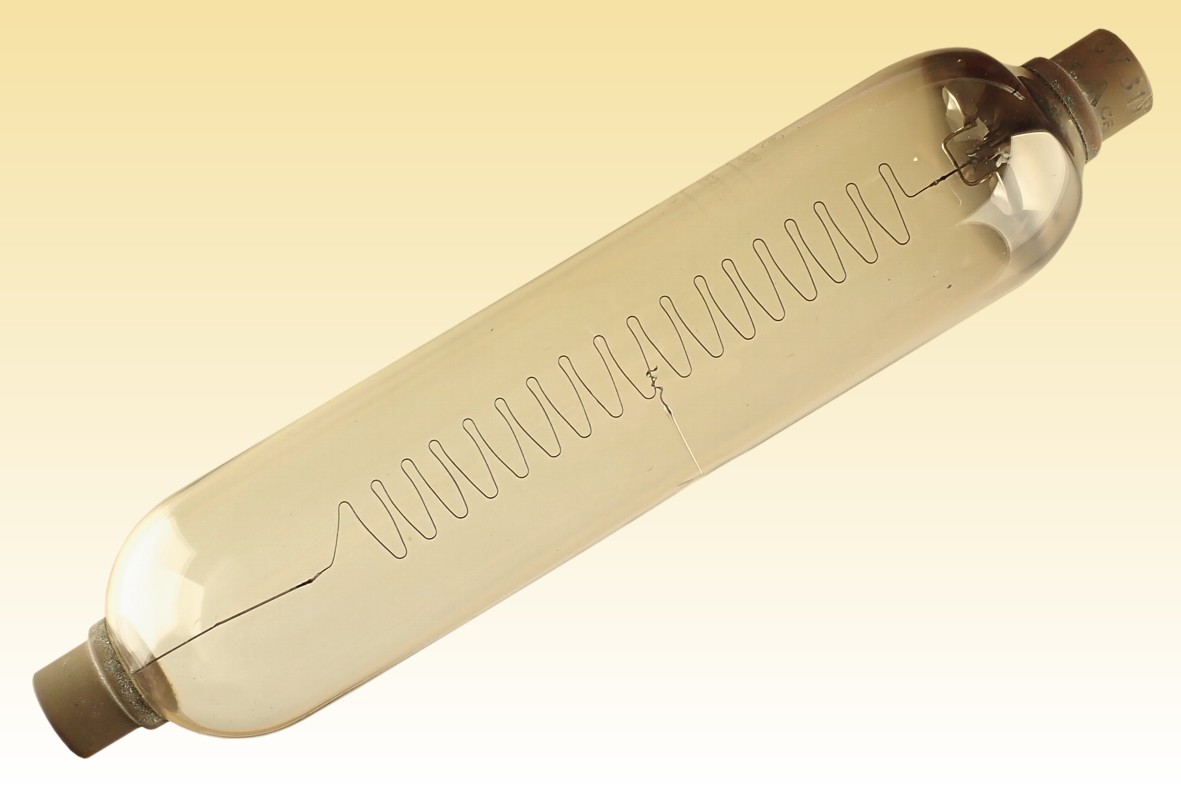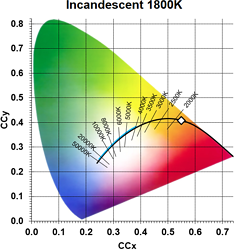
|
Robertson Infrared Carbon Radiator CV311 |

This lamp appears to have been introduced in an attempt to maintain the carbon heater business. Its double-ended design features a single zig-zag filament to accommodate its thermal expansion, supported at its centre by a helical wire carried on a glass stalk fused to the bulb side. This permits horizontal operation similar to the resistance bar elements, but it appears not to have become successful.
During WWII this lamp found another application as a 300-ohm power resistor, being known by its Air Ministry references 5L/18 and 5L/444, and valve code CV311. Carbon lamps make convenient resistors due to their high power dissipation capability. Banks of four or six lamps were used vertically as a dummy load for testing the output of radio transmitters. Lamps made for this service are characterised by a barium mirror getter coating at one end. That was possibly added to avoid radio frequency interference, which is a common problem from lamps having imperfect vacuum.




| Manufacturer: | The General Electric Company of England | |
| Lamp Power: | 250 Watts | |
| Lamp Voltage: | 230-250 Volts | |
| Lamp Current: | 1.04 Amperes | |
| Cap Type: | S22/19x26 | Brass |
| Bulb Type: | T-57 | T-18 in eighths/inch |
| Bulb Finish: | Clear | Soda-lime glass |
| Filament Type: | Carbon | Axial zig-zag |
| Atmosphere: | Vacuum | Barium getter |
| Luminous Flux: | 135 lumens | |
| Luminous Efficacy: | 0.54 lm/W | |
| Colour Temperature: | 1800K | |
| Colour Rendering: | Ra 100 | |
| Chromaticity Co-ordinates: | CCx: 0.544 | CCy: 0.401 |
| Lifetime: | Approx. 1000 hours | |
| Burning Position: | Universal | |
| Overall Length: | 285 mm | 111/2 inches |
| Lighted Length: | 152 mm | 6 inches |
| Factory: | Hammersmith | England |
| Date of Manufacture: | 1947 June | Date Code: 66 & CF |
| Original Value: | GB £0 32s 6d | 1960 |

